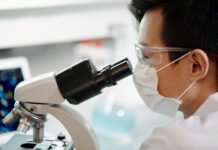When it comes to chemistry, the processes we use at the bench are still very similar to the techniques that were used in the 18th century. Quantum mechanic Alán Aspuru-Guzik thinks that innovation could be exponentially faster if we used quantum computers and artificial intelligence (AI) to help overcome human biases.
“It turns out that humans, because they have preconceptions, are usually more biased than AI,” says Aspuru-Guzik, professor of chemistry and computer science at the University of Toronto and principal investigator of the Matter Lab.
“AI is more like a child that is discovering things on its own. And what is really cool about that is if you ask your child, for example, to find something in the room, they will find you a pen under the table or stuff like that that you would not usually do as an adult, saying, ‘no I must have left my pen on this table here’, and not look under it.”
Beyond looking in unexpected places, computers can objectively think about complex multi-dimensional data sets and find interconnected patterns in ways that humans can’t.
“Humans are good at imagining things in three dimensions,” says University of Toronto undergraduate student Akshat Nigam. “Anything beyond that, let’s say four dimensions, and we completely collapse there.”
Considering the vast data sets that are now common, and the number of different compounds that can be present in chemical reactions, it can be nearly impossible for the human mind to interpret so many relationships. Computers don’t share these limitations.
“Machines have an ability to compress really high-dimensional spaces into interpretable models for us,” adds Nigam. “So imagine a hundred-dimensional space being compressed to three dimensions. Some might lead us to pretty interesting answers.”
Quantum computers could disrupt how things have been done in chemistry labs since the 18th century, says postdoctoral researcher Jenya Vestfrid. These tools will accelerate bigger discoveries.
“If we can be helped by smart machines, the timing will be much faster, the output will be bigger,” says Vestfrid. “I do believe that it will promote chemistry to the next evolution step.”








































